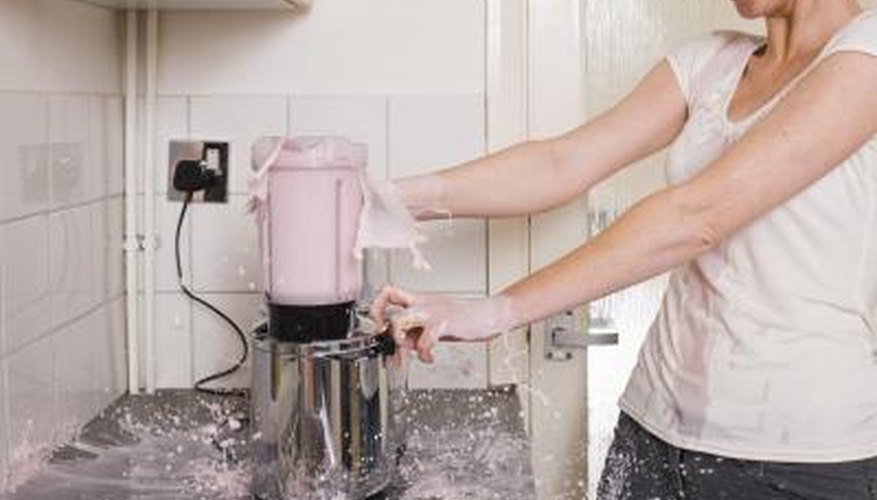Milkshake machines and blenders are both capable of producing frothy ice cream-based drinks, but there are significant differences between these. Restaurants noted for their milkshakes employ speciality machines to do the job rather than relying on a bar blender, but when making milkshakes at home, you likely put your blender to a second use rather than pulling out another appliance. If making the perfect, diner-style milkshake is important to you, you might want to consider getting a milkshake machine to replicate the desserts you covet.
Milkshake Machine History
Comparing milkshake machines to blenders in their history, the milkshake maker wins the longevity race, but only by a hair. In 1911, Chester Beach completed his work on a motor to run on both AC and DC power. He put this motor into a blender specifically designed to blend a popular brand of malted milk powder. Both Beach's company -- Hamilton Beach -- and the milk powder company -- Horlick's -- continue to make their wares today.
- Comparing milkshake machines to blenders in their history, the milkshake maker wins the longevity race, but only by a hair.
- In 1911, Chester Beach completed his work on a motor to run on both AC and DC power.
Blender History
Blenders came later than milkshake machines, but not by much. It was not until 1922 when Stephen Poplawski created the bar blender to prepare drinks at a soda fountain. Later improvements and marketing by manufacturers in the 1930s and 1950s introduced the public to the many uses beyond fountain drinks they could make with their blenders at home.
Construction
A milkshake machine consists of a spindle suspended from a motor. Commercial versions of the machine have numerous spindles for mixing several milkshakes at once, a unit invented by McDonald's founder Ray Kroc, called the Multimixer. This spindle is inserted into a removable cup and blends and aerates the ingredients inside the cup. A blender has a lidded jar which fits atop a motor. Blades inside the jar spin and aerate and mix the ingredients inside the jar.
- A milkshake machine consists of a spindle suspended from a motor.
- This spindle is inserted into a removable cup and blends and aerates the ingredients inside the cup.
Uses
A milkshake machine mixes drinks or thick batters, but that is all the machines will do. Milkshake machines cannot crush ice, grind spices or make chunky soups smooth -- all actions a blender can do. The best uses for a milkshake machine are for combining drink ingredients, especially if one of the ingredients is a powder like malted milk powder or drink mix. A blender will crush ice with other drink ingredients for making icy blended drinks such as coffee frappes and blended margaritas.
- A milkshake machine mixes drinks or thick batters, but that is all the machines will do.
- The best uses for a milkshake machine are for combining drink ingredients, especially if one of the ingredients is a powder like malted milk powder or drink mix.
Milkshake Differences
Making a milkshake with a milkshake machine produces a drink with a light and airy texture, but the machine will require twice as long to run as a blender. Blender jars have a larger capacity than the cups designed to fit under the spindle of milkshake machines, making the blender the better choice for making shakes for a crowd. The milkshake machine has an advantage over the blender. After pouring the milkshake into a glass, the leftover shake in the bottom of the blending cup can be given to the drinker, as is a customary practice in some modern soda fountain shops and diners. This cannot be done with a larger blender as the drinker could nick the base of a spoon getting milkshake from around the blades at the base of a blender jar.
- Making a milkshake with a milkshake machine produces a drink with a light and airy texture, but the machine will require twice as long to run as a blender.
